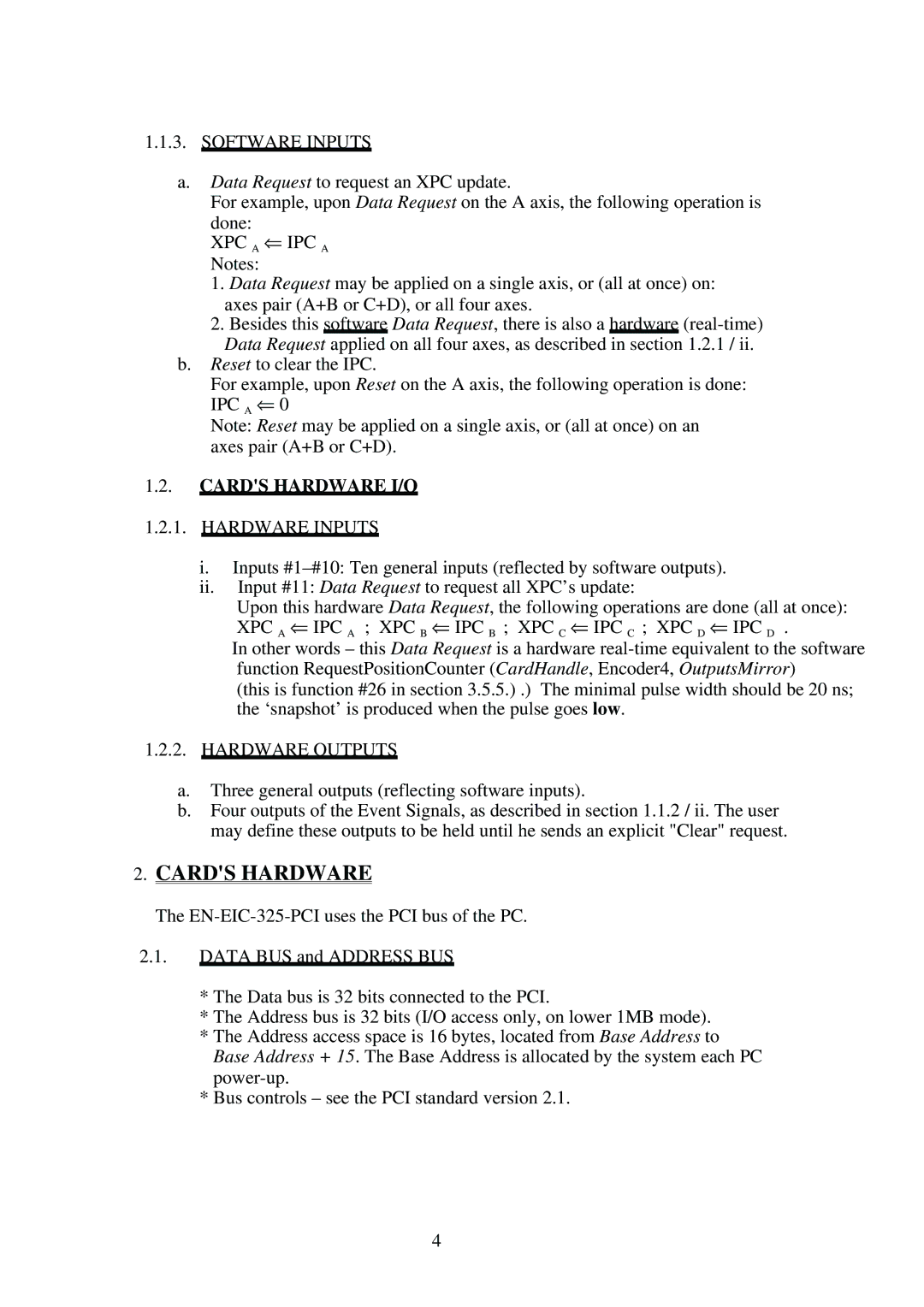1.1.3.SOFTWARE INPUTS
a.Data Request to request an XPC update.
For example, upon Data Request on the A axis, the following operation is done:
XPC A ⇐ IPC A
Notes:
1.Data Request may be applied on a single axis, or (all at once) on: axes pair (A+B or C+D), or all four axes.
2.Besides this software Data Request, there is also a hardware
b.Reset to clear the IPC.
For example, upon Reset on the A axis, the following operation is done: IPC A ⇐ 0
Note: Reset may be applied on a single axis, or (all at once) on an axes pair (A+B or C+D).
1.2.CARD'S HARDWARE I/O
1.2.1.HARDWARE INPUTS
i.Inputs
ii.Input #11: Data Request to request all XPC’s update:
Upon this hardware Data Request, the following operations are done (all at once):
XPC A ⇐ IPC A ; XPC B ⇐ IPC B ; XPC C ⇐ IPC C ; XPC D ⇐ IPC D .
In other words – this Data Request is a hardware
(this is function #26 in section 3.5.5.) .) The minimal pulse width should be 20 ns; the ‘snapshot’ is produced when the pulse goes low.
1.2.2.HARDWARE OUTPUTS
a.Three general outputs (reflecting software inputs).
b.Four outputs of the Event Signals, as described in section 1.1.2 / ii. The user may define these outputs to be held until he sends an explicit "Clear" request.
2.CARD'S HARDWARE
The
2.1.DATA BUS and ADDRESS BUS
*The Data bus is 32 bits connected to the PCI.
*The Address bus is 32 bits (I/O access only, on lower 1MB mode).
*The Address access space is 16 bytes, located from Base Address to Base Address + 15. The Base Address is allocated by the system each PC
*Bus controls – see the PCI standard version 2.1.
4
